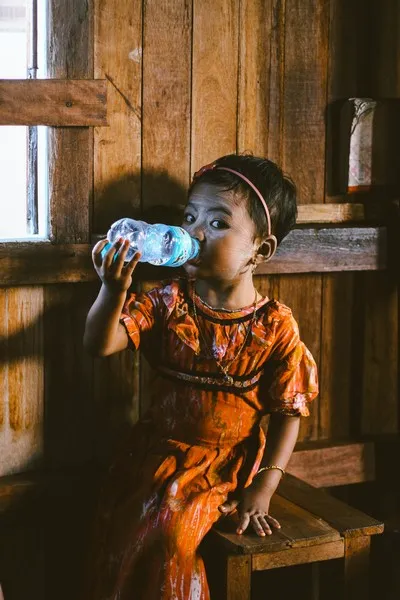Table of Contents
- Introduction
- The Importance of Understanding Early Life Conditions
- Early Childhood Adversities: What Matters?
- Theoretical Perspectives on Childhood and Longevity
- Mechanisms Linking Childhood to Adulthood Health
- The Role of Culture and Community
- Policy Implications and Interventions
- Overcoming Obstacles: Structural Inequalities
- The Long-Term Impact on Society
- Conclusion
Introduction
Life expectancy, often viewed as a measure of societal progress and individual well-being, is a multifaceted concept influenced by a complex web of factors. Sociologists and public health researchers alike have dedicated substantial attention to understanding these determinants, identifying socioeconomic status, access to healthcare, culture, and—especially—conditions during childhood as pivotal. Although genetics and lifestyle choices later in life do play roles, childhood experiences can create long-lasting trajectories. The question arises: how and why do early-life experiences have such a profound influence on longevity?
This article delves into the sociological insights on how early life conditions shape not only health, but also social and economic opportunities. The discussion seeks to analyze major theoretical perspectives from sociology, highlight the mechanisms by which childhood conditions influence adult outcomes, and underscore the broader social context that impedes or promotes healthy childhoods.
The Importance of Understanding Early Life Conditions
Sociologists underscore that the shape of society is determined, in part, by how well it nurtures its youngest members. Children are not only the recipients of immediate caregiving practices, but also of broader social and cultural structures. When social systems and institutional frameworks fail to support households, the resulting shortcomings can leave indelible marks that shape a child’s entire life course.
- Intergenerational Influences: Patterns of inequality can persist through generations. Low educational attainment, insecure employment, and health disparities often interlock to form cycles that repeat themselves in families. By understanding how childhood conditions influence life expectancy, we gain insights into breaking these cycles.
- Policy Implications: Governments and organizations often focus on adult health interventions. Yet, addressing the social and economic barriers faced by children can have a far more profound impact on population health in the long run.
Early Childhood Adversities: What Matters?
The scope of childhood conditions encompasses a variety of dimensions. To name a few: parental income, parental education, nutrition, community resources, housing quality, social support, and exposure to stress. While different societies and cultures attach unique importance to these factors, their foundational role remains widely recognized across contexts.
Socioeconomic Status and Access to Resources
One of the most significant indicators of childhood well-being is the socioeconomic status (SES) of the family. This status influences nearly every dimension of a child’s life:
- Nutritional Access: A direct link exists between family income and food quality. Malnutrition or limited access to nutrient-rich diets can result in stunted growth and compromised immune systems, ultimately affecting health trajectories.
- Healthcare Availability: Lower SES correlates with fewer opportunities to receive routine medical check-ups, vaccinations, and specialized care.
- Educational Opportunities: The quality of educational institutions is closely tied to neighborhood wealth. Children in well-funded school districts benefit from smaller class sizes, better materials, and more extracurricular programs.
These elements not only shape immediate health and developmental outcomes but also affect long-term life expectancy. People who grow up in low SES conditions face an increased risk of chronic diseases in adulthood, often due to lacking access to proper healthcare and educational resources that promote healthy behaviors.
Family Structure and Social Support
The configuration of a family or household is another relevant factor. Children who grow up in stable environments with consistent caregivers often fare better in terms of social and emotional well-being. On the other hand, disrupted family settings or neighborhoods with high crime rates can create chronic stress, raising cortisol levels and weakening immune responses. Chronic stress can lead to long-term complications, such as cardiovascular diseases, mental health disorders, and substance abuse.
Moreover, strong social support networks can mitigate the negative impact of some adversities. Extended family, community, and peer group relationships provide safety nets that can help children navigate economic and emotional hardships.
Theoretical Perspectives on Childhood and Longevity
Sociology offers a variety of theories that shed light on why childhood conditions have such a profound impact on life expectancy. These theories recognize that development does not unfold in a vacuum, but rather takes place within the social structures that children inhabit.
Life Course Theory
Life Course Theory highlights how an individual’s life trajectory is shaped by critical life events, stages, and turning points. From this perspective, childhood is not simply a preliminary phase but rather a foundational period that influences the remainder of one’s life. The timing and sequence of transitions—such as starting school, encountering traumatic events, or entering the workforce—can set individuals on divergent paths.
The family’s SES, parental health behaviors, and the community’s support systems during childhood become embedded in one’s ‘life course.’ Individuals who experience favorable early life conditions tend to develop protective factors that continue to serve them, while those with disadvantages in their formative years often struggle to overcome them without substantial societal interventions.
Social Determinants of Health Approach
The Social Determinants of Health approach underscores that health outcomes are influenced not solely by personal choices but significantly by the social environment. Childhood conditions exemplify this dynamic. Access to nutritious food, education, safe housing, and stable family structures can all be understood as social determinants that heavily contribute to higher or lower life expectancies.
Structural Functionalism
A more traditional sociological theory, Structural Functionalism posits that societies exist because of various structures (like family units, economic systems, and schools) that fulfill essential functions. Within this framework, the family is a central institution responsible for childcare and primary socialization. When families lack resources, the entire function of society is disrupted, as these children may grow up to become adults who struggle with chronic illnesses, underemployment, or social marginalization, impacting the overall stability and productivity of the society.
Mechanisms Linking Childhood to Adulthood Health
Get the full article AD FREE. Join now for full access to all premium articles.
View Plans & Subscribe Already a member? Log in.





